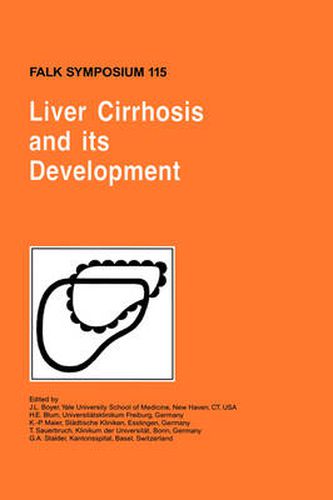Readings Newsletter
Become a Readings Member to make your shopping experience even easier.
Sign in or sign up for free!
You’re not far away from qualifying for FREE standard shipping within Australia
You’ve qualified for FREE standard shipping within Australia
The cart is loading…






This title is printed to order. This book may have been self-published. If so, we cannot guarantee the quality of the content. In the main most books will have gone through the editing process however some may not. We therefore suggest that you be aware of this before ordering this book. If in doubt check either the author or publisher’s details as we are unable to accept any returns unless they are faulty. Please contact us if you have any questions.
Liver cirrhosis is a major clinical problem worldwide and is associated with significant morbidity and mortality from its complications, such as liver cell insufficiency with coagulopathy and hepatic encephalopathy, portal hypertension with ascites and gastrointestinal bleeding, hepatorenal syndrome, HCC development and otehrs. This volume, the proceedings of Falk Symposium 115 held in Basel, Switzerland, October 22-24, 1999 (Part II of the Basel Liver Week 1999; XI International Congress of Liver Diseases) covers our present knowledge of the aetiologies and early stages of liver cirrhosis development. Based on this information, strategies are discussed that are aimed at the prevention, early diagnosis and therapy of chronic liver diseases, thus preventing their progression to cirrhosis and its complications, including HCC development. The main topics mentioned above are complemented by three state-of-the-art chapters on modern aspects of medicine in general and hepatology in particular as well as their perspectives beyond the year 2000: Molecular Medicine , New Hepatitis Viruses and Genetic Liver Diseases: Diagnosis and Therapy . Introductory chapters focusing on the more basic aspects of the biology of live cells as well as on the mechanisms underlying fibrogenesis, cholestasis and inflammation will be followed by a detailed discussion of the clinically most important causes of liver cirrhosis worldwide: hepatitis viruses B, C and D; toxins (alcohol, drugs and others) as well as metabolic liver diseases (haemochromatosis, Wilson disease, alpha-1-antitrypsin deficiency, porphyria cutanea tarda and protoporhyria). This book, therefore, will interest clinically oriented basic scientists as well as those in clinical practice, givng an update on many aspects of modern hepatology and its perspectives in the 21st century.
$9.00 standard shipping within Australia
FREE standard shipping within Australia for orders over $100.00
Express & International shipping calculated at checkout
Stock availability can be subject to change without notice. We recommend calling the shop or contacting our online team to check availability of low stock items. Please see our Shopping Online page for more details.
This title is printed to order. This book may have been self-published. If so, we cannot guarantee the quality of the content. In the main most books will have gone through the editing process however some may not. We therefore suggest that you be aware of this before ordering this book. If in doubt check either the author or publisher’s details as we are unable to accept any returns unless they are faulty. Please contact us if you have any questions.
Liver cirrhosis is a major clinical problem worldwide and is associated with significant morbidity and mortality from its complications, such as liver cell insufficiency with coagulopathy and hepatic encephalopathy, portal hypertension with ascites and gastrointestinal bleeding, hepatorenal syndrome, HCC development and otehrs. This volume, the proceedings of Falk Symposium 115 held in Basel, Switzerland, October 22-24, 1999 (Part II of the Basel Liver Week 1999; XI International Congress of Liver Diseases) covers our present knowledge of the aetiologies and early stages of liver cirrhosis development. Based on this information, strategies are discussed that are aimed at the prevention, early diagnosis and therapy of chronic liver diseases, thus preventing their progression to cirrhosis and its complications, including HCC development. The main topics mentioned above are complemented by three state-of-the-art chapters on modern aspects of medicine in general and hepatology in particular as well as their perspectives beyond the year 2000: Molecular Medicine , New Hepatitis Viruses and Genetic Liver Diseases: Diagnosis and Therapy . Introductory chapters focusing on the more basic aspects of the biology of live cells as well as on the mechanisms underlying fibrogenesis, cholestasis and inflammation will be followed by a detailed discussion of the clinically most important causes of liver cirrhosis worldwide: hepatitis viruses B, C and D; toxins (alcohol, drugs and others) as well as metabolic liver diseases (haemochromatosis, Wilson disease, alpha-1-antitrypsin deficiency, porphyria cutanea tarda and protoporhyria). This book, therefore, will interest clinically oriented basic scientists as well as those in clinical practice, givng an update on many aspects of modern hepatology and its perspectives in the 21st century.